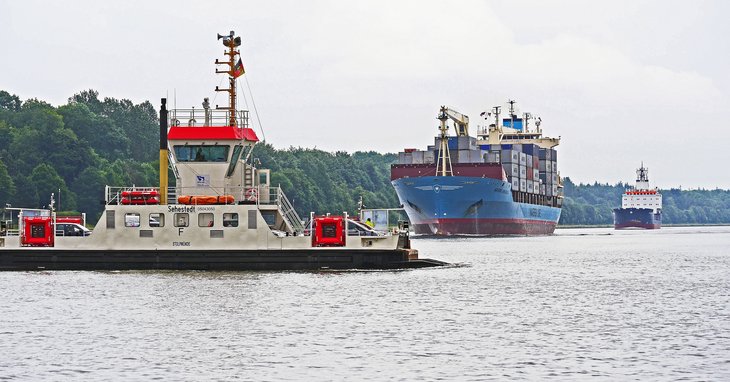
Shipping has become the backbone of international trade in recent decades. An increasing number of goods and commodities are being transported by sea from continent to continent. At the same time, more and more people are booking holidays on one of the many cruise ships, which now not only travel through tropical and temperate regions but are also increasingly venturing into the Arctic and Antarctic.
An engine of our economy
Without maritime trade, Europe would have neither exotic fruits and spices nor products made from raw materials like oil or iron ore. Over 80 percent of the goods and raw materials traded worldwide are transported by sea. A driving factor in shipping is globalisation: goods are produced in regions where they are comparatively cheap to manufacture and are then transported by ship to areas where they are sold at much higher prices. To save on storage costs, merchants and producers order goods in smaller quantities at specific times (just in time). As a result, goods are shipped in smaller amounts and transported by container. A modern container ship can carry around 24,000 containers(1).
The majority of sea transport follows fixed routes that connect the major ports of different continents. The most important route from Asia to Europe, for example, passes through the Suez Canal in Egypt, which connects the Red Sea to the Mediterranean. When the container ship “Ever Given” became stuck across the Suez Canal in March 2021, blocking it for several days, it had significant negative consequences for supply chains and global trade.
The downsides of shipping
Transporting goods by ship across the world's oceans is currently the most energy-efficient form of international trade. However, the rapid expansion of international shipping, as well as the growing cruise tourism industry, has clear downsides. Ship emissions pollute the air and accelerate climate change. Sewage, waste, invasive species, and the mass influx of holidaymakers put a strain on marine ecosystems, particularly sensitive areas like tropical coral reefs or penguin colonies in the Antarctic.
![Travelling boat in a bay [Translate to English:] Ein großes weißes Kreuzfahrtschiff dominiert das Bild. Davor ist ein Hafen und dahinter eine Hügellandschaft.](/fileadmin/_processed_/a/b/csm_stephanie-klepacki-4jqlGmJZcoY-unsplash_4cf4bf729a.jpg)
In addition, there is the risk of ship accidents and the noise generated by ship engines and propellers. This noise affects the marine environment to a far greater extent than scientists had previously assumed. However, researchers have only been able to study the effects of noise pollution in a few species.
In both the shipping industry and the cruise sector, a shift in mindset has occurred - driven by concerns over image, increasing awareness of the issue, and rising costs. Engineers are developing new propulsion systems and refining hull designs to reduce fuel consumption. In modern ports, ships draw power from the grid. There is also a search for low-emission alternatives to heavy fuel oil and marine diesel.
The impacts of climate change
How maritime trade will develop in the future remains to be seen. It is closely linked to the development of the global economy, but also to local conflicts, such as those along the Red Sea. It is also uncertain how the climate crisis will affect this. Extreme weather conditions, such as storms and high waves, can severely impact transport and navigation conditions, as well as increase risks for cargo and crew. Scientists predict an increasing risk of damage for all 136 megaport cities around the world, such as from:
- flooding due to rising sea levels and increasingly frequent storm surges
- heavy rainfall followed by high water levels
- rising temperatures, heatwaves, and severe drought, which lead to lower river water levels and complicate operations at ports along major rivers such as the Elbe
- extreme winds and waves, causing coastal erosion and long-term damage to harbour facilities
The infrastructure at many ports is no longer new, and it is uncertain whether it can withstand the changing climatic conditions. The risks are well-known, and various protective measures are being pursued, though these come at considerable cost(1).
At the same time, new trade routes may become feasible. For instance, the previously ice-bound Northwest and Northeast Passages could be reliably navigable for several weeks each year. This route from Europe to Asia covers only 13,400 kilometres. In comparison: The route via the Suez Canal is 21,200 kilometres. In Germany's marine spatial planning for the North Sea, a shipping route towards the Arctic has already been designated(2).
- (1) World Ocean Review 7, "Lebensgarant Ozean - nachhaltig nutzen, wirksam schützen" (2021), Kapitel 4 "Transporte über das Meer"
- (2) Raumnutzungsplan 2021, siehe Website www.bsh.de/DE/THEMEN/Offshore/Meeresraumplanung/meeresraumplanung_node.html







